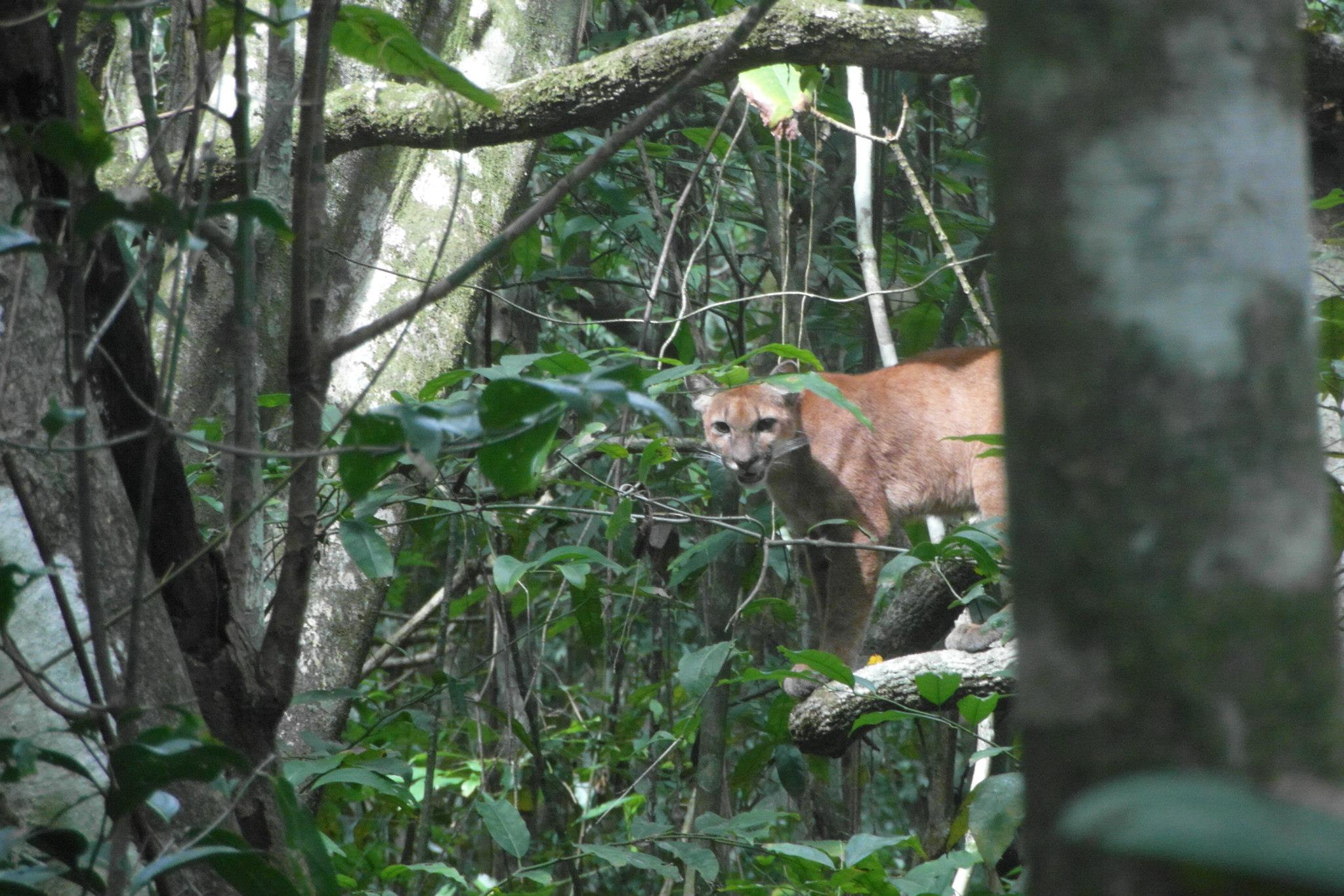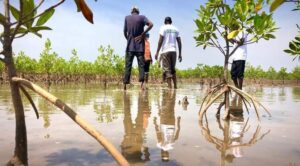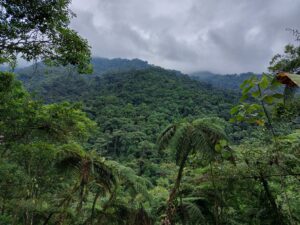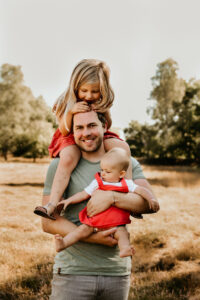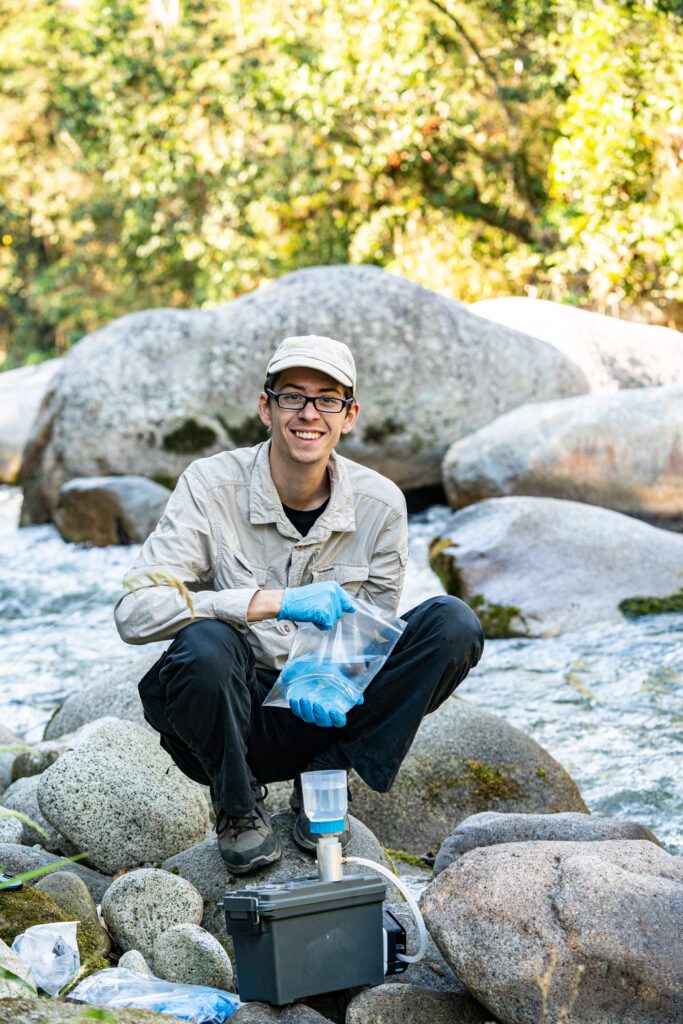Our founders’ story: Michael
Why did you decide to start Habitats?
There are multiple reasons for that, and I think you can boil them down to three main categories:
My children
I have two young daughters and that really makes you look at things differently. You want to give them the best possible future, and that’s just not possible with the way we are currently operating globally. My wife and I want them to be able to enjoy nature to its fullest extent, now and in the distant future. When I then read all the latest numbers on climate change and biodiversity and the impact this will have on our children, and I see the inaction on a political level, then I just feel like I need to act.
And at the same time, we’re still lucky. We still think about the future, while millions of people are feeling the effects of the climate crisis very hard already.
My company’s CO2-neutral journey
Next to Habitats, I’m also the founder of Quest, an impact design studio that focuses on scaling impact-driven organizations, de-risking impact innovation and helping organization transition towards becoming a fully sustainable business. Quest is also a founding partner of Habitats. We’re very selective of the customers we work with, which means we also need to walk the talk ourselves and we take this very seriously.
We did a lot of research on best practices to become CO2-neutral. Let’s be honest: it would be rather easy for a small service company like Quest to obtain a CO2-neutral label. So why don’t we do that? Let’s do the math. To get a CO2-neutral label, you have to get an analysis of your environmental footprint by an external expert. The average cost for us: ca. 5,000 EUR annually. And of course, we’re still emitting CO2 emissions through our operations and our customer work at the moment, so we would have to offset our emissions through one of the many projects available on the market. For us, I think this would cost around 500 EUR annually.
Total cost to obtain the CO2-neutral label: min. 5,500 EUR. Well we’d rather have more impact by spending those 5,500 EUR directly on a project we believe in than to obtain a label too many companies are still using as an excuse to not do anything about their carbon footprint anymore. Enter Habitats.
Love for nature
I just love nature. I’ve been lucky enough to travel around a lot and have seen with my own eyes how amazing places like the Amazon, Pantanal or the Kenyan Savannah are, but also how those places are getting destroyed by humans. When you need to drive 4 hours to your campsite in Borneo and you’re driving through palm oil plantations for 3 hours and 45 minutes, that makes you think.

When you need to drive 4 hours to your campsite in Borneo and you’re driving through palm oil plantations for 3 hours and 45 minutes, that makes you think.
What tipping point made you decide to focus on biodiversity conservation & restoration?
I think it was a mixture of multiple aspects coming together. With Quest, we’re constantly up-to-date about everything impact-related. Sadly, that means we read a lot of bad news, especially on biodiversity. At the same time, you see:
- large organizations looking the other way, not willing to make any change and doing everything they can to maintain status quo
- a complete lack of political will to acknowledge and tackle this crisis
When my friend Ellis then introduced me to our co-founder Billy and we seemed to align on vision, the decision to start a non-profit focused on biodiversity conservation and restoration was made.
WHat’s your favorite habitat?
That’s a hard one, because I love all of them. I’ve had amazing experiences in the Latin American jungle and the wetlands of the Pantanal, but if I really have to pick I think I’d go for the African Savannah. It just feels like walking straight into a documentary on National Geographic.
What’s your most memorable nature experience?
When you ask that question, I immediately have to think about three completely different experiences:
1/ Seeing the big 5 in Maasai Mara and the Serengeti
You never forget the moment you see your first lion, elephant or rhino. Sleeping in the middle of the Serengeti, with hyenas walking right through our tented camp was an incredible experience.
2/ Crossing the Brazilian pantanal on havaianas
The Pantanal is such an extremely beautiful place to visit, I’d recommend it to everyone. We slept in hammocks and woke up to the sound of tucans every morning. The amount of wildlife you see during the long walks through the cayman-infested wetlands is just amazing.

3/ Pumas in Costa Rica
During a (definitely not to be underestimated) trek through the Corcovado National Park in Costa Rica, we were extremely lucky to encounter a puma and her cubs eating a freshly caught howler monkey.
